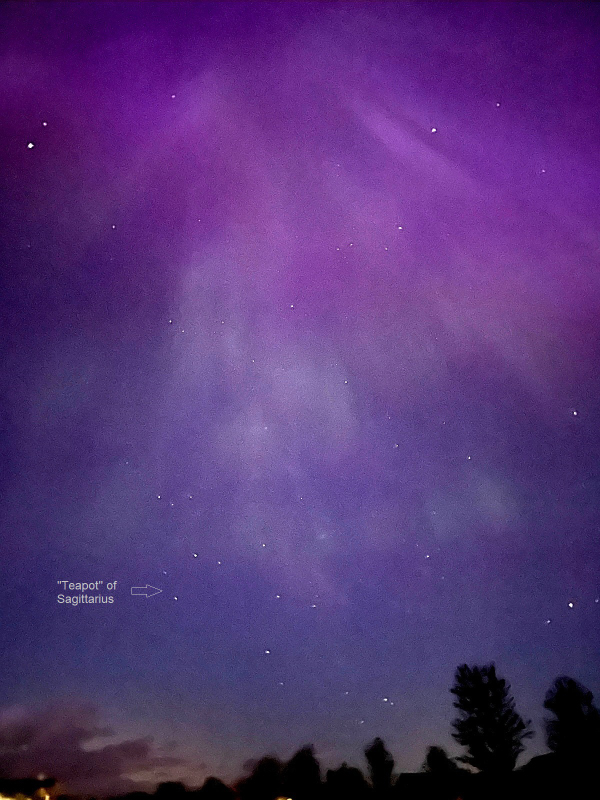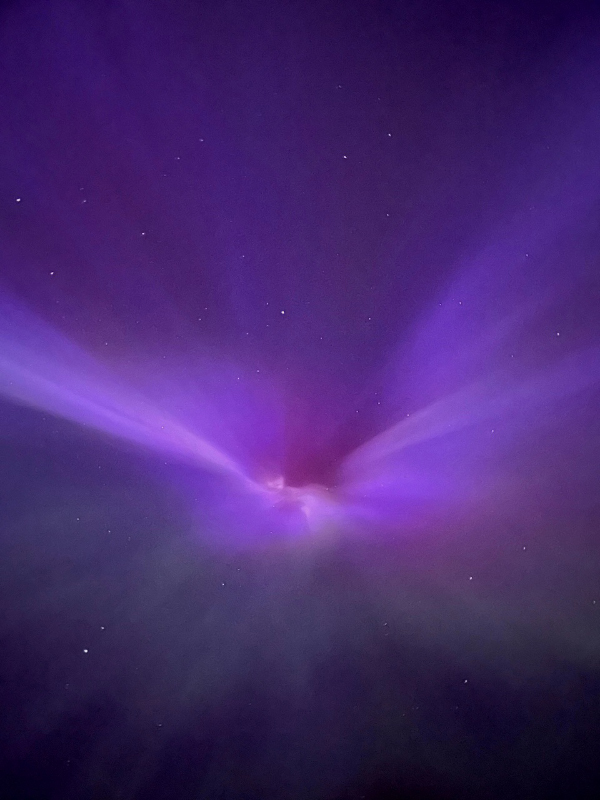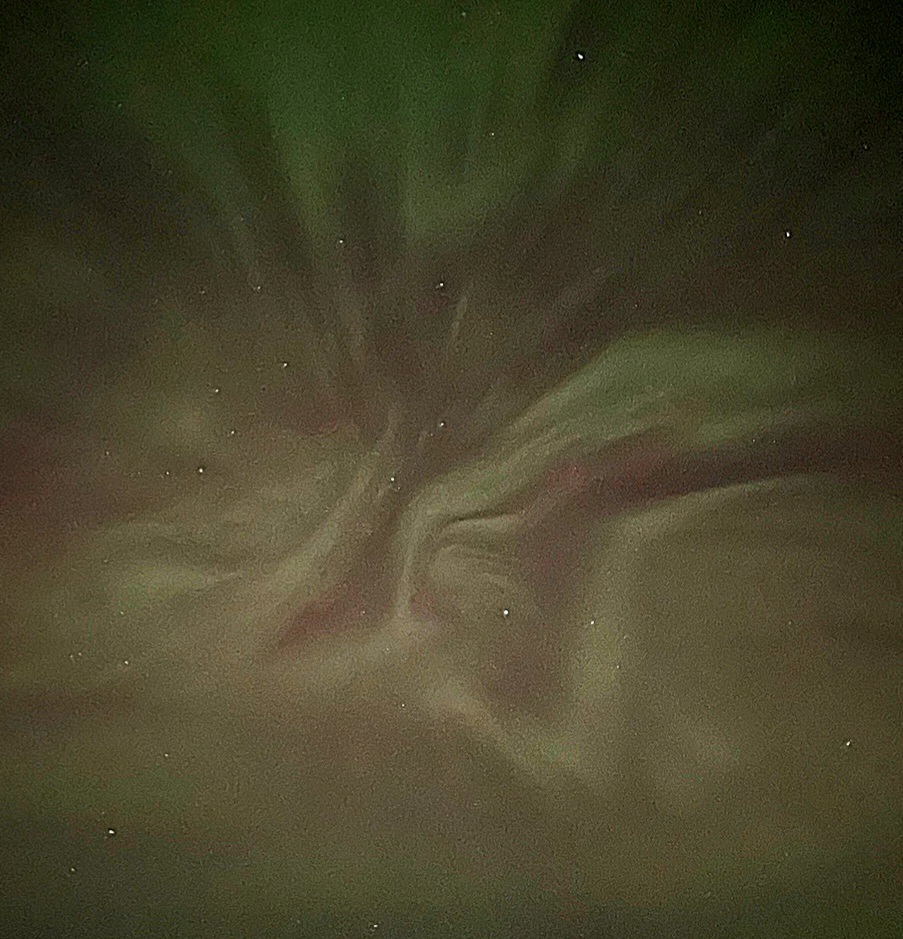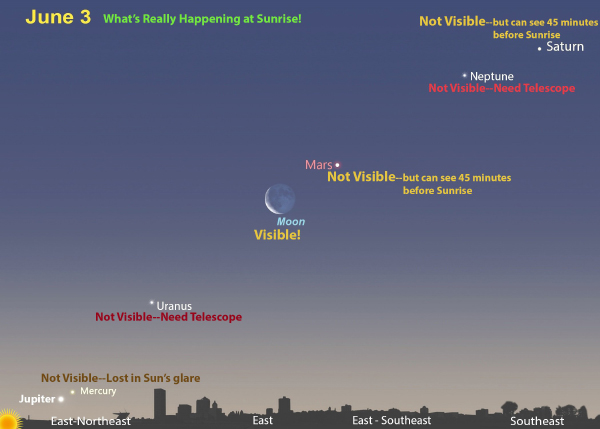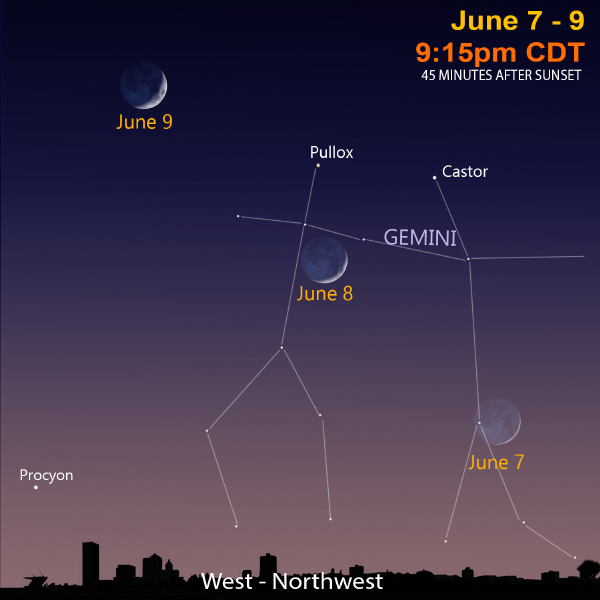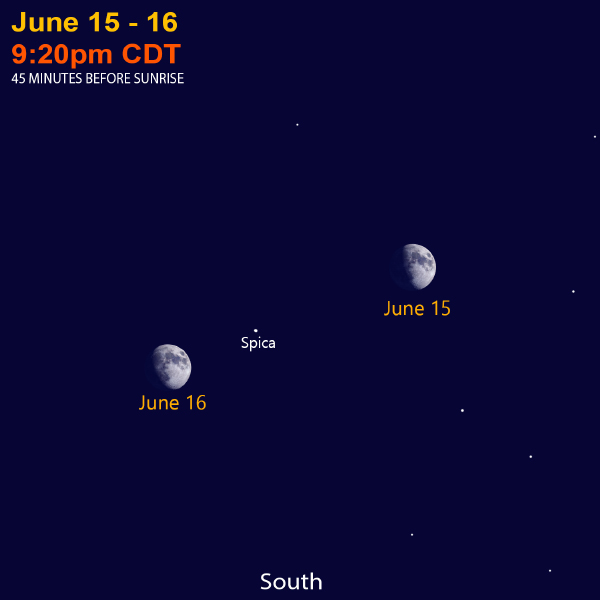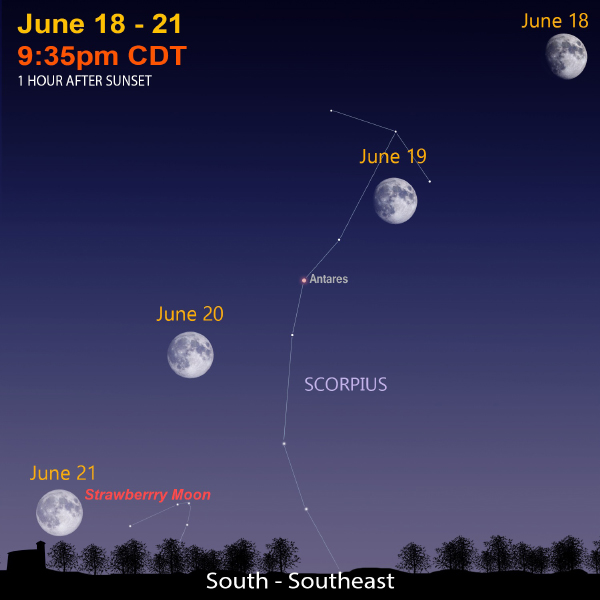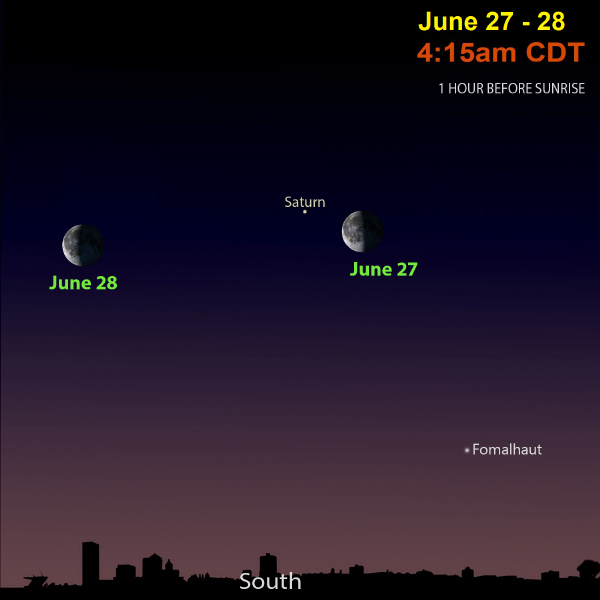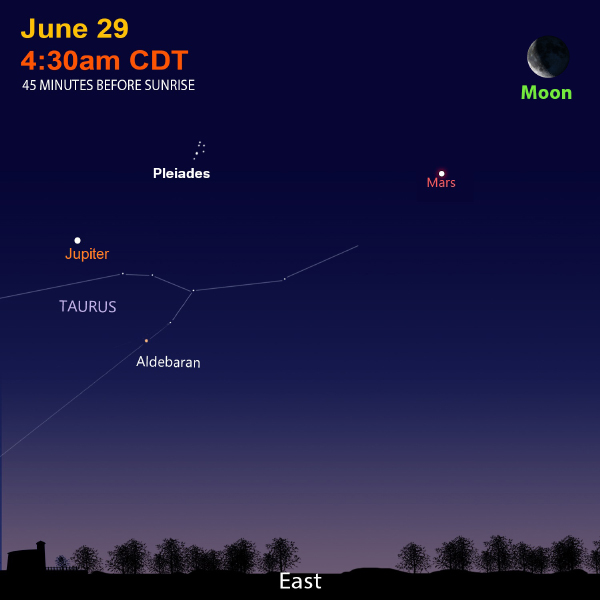Cosmic Curiosities
“I would rather be a superb meteor,
every atom of me in magnificent glow,
than a sleepy and permanent planet.
The function of man is to live, not to exist...”
- Jack London, American Author
A New Wisconsin Meteorite
The 2013 Chelyabinsk Meteor. Credit: Aleksandr Ivanov
Around 200 years ago, a huge rock from space fell on the township of Vienna, Wisconsin, just north of Madison. While some people may have seen it, no one wrote it down. It was big enough to see during daytime, but less obvious. Heavy clouds could have obscured some of its light. If it happened to fall on a clear, starry night, this “shooting star” would have been beyond spectacular.
Let’s skip ahead to 2009: Jim Koch, a Wisconsin farmer out plowing his fields, struck something rather heavy. While most farmers unearth rocks all the time, this was a bit different. Mr. Koch knew this rock was rather unique. It turned out to be a rare iron meteorite. What had fallen 200 years ago was now one of Wisconsin’s biggest meteorites!
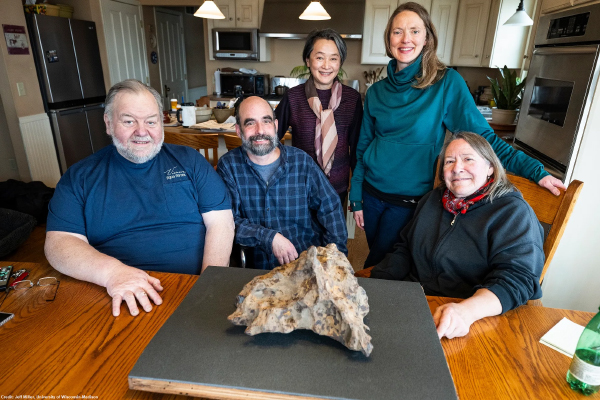
Vienna Meteorite, Image by Jeff Miller UW-Madison. Jim Koch is on the left.
The Vienna Meteorite, as it is currently called, has “flow line” features, which are ridges formed as the meteor became intensely hot as it barreled through Earth’s atmosphere. The space rock also has a “fusion crust,” which shows the orientation of the meteor as it fell to Earth. These two features lead scientists to think that the meteorite impacted Wisconsin in the last few hundred years.
Wisconsin now has 15 classified meteorites found in the state. The Vienna Meteorite is the largest iron meteorite classified in the United States since 1981.
There may be more meteorites on or near Jim Koch’s farm; many meteorites have siblings. When a space rock races down through the air at many miles per second, friction heats it up so much that the rock breaks apart and various-sized pieces fall to the Earth in the same area. A great example of a space-rock family is the Trenton Meteorite.
In 1858, a 62-pound meteorite was first found in Trenton, Wisconsin, 30 miles north of Milwaukee. By 1868, four more were found in the same area. In 1952, with better magnetic searching equipment, two huge Trenton Meteorites were found weighing 527 and 413 pounds! They are now at the Unites States National Museum in Washington, DC. A total of 13 related rocks were found in the Trenton area, and there could be more.
Putting these Trenton rock pieces back together, scientists think it originally weighed more than 1,100 pounds. One estimate surmises this mammoth rock fell to Earth more than 100,000 years ago, long before any human roamed the lands of what we now call Wisconsin.
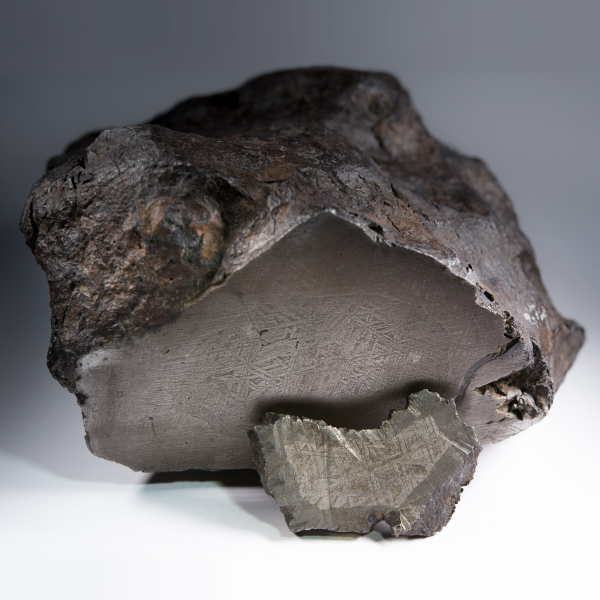
Trenton Meteorite at MPM
The Milwaukee Public Museum (MPM) has one of the Trenton Meteorites. It weighs just 10 pounds—a pretty big space rock, but rather tiny compared to its bigger cousins on the East Coast.
Aurora Reflections
Two solar flares that triggered recent aurora sightings on May 10-11. (NASA/SDO / NOAA)
I knew the auroras were coming!
Two huge sun storms took place on May 7 and 8. When these solar flares, or coronal mass ejections, take place, it takes one or two days for the charged particles that are released to reach the Earth.
Aurora predictions by NASA and NOAA were off the charts. Like many, I was scurrying around the internet, checking more websites for detailed predictions that centered on Wisconsin. Would we see them? For how long? How bright? Then, there is the weather to worry about. Like a solar eclipse, you need a clear sky to witness the aurora. Predictions pointed to Friday, May 10, as the best night, so I scanned the weather forecasts: A big thunderstorm would roll through around sunset that night. Then, an hour or two later, the clouds would thin, and the stars would pop out —and the aurora, too, hopefully!
Late Friday afternoon, I checked in with my computer again. The aurora had arrived with dazzling displays in Europe. My anticipation grew.
Around sunset, it did rain. Afterwards, I went outside and stepped through a few puddles. It was getting dark. I looked up from our backyard: Nothing—all clouds. I had to be patient (not my strong suit). Then, I returned to the web to peruse social media. This is a great resource for finding out who is seeing the aurora and where, in real time. Postings showed people seeing beautiful displays where skies were clear. Their pictures were stunning—amazing purples, reds, and greens!
The aurora occurs in the upper atmosphere of Earth. Oxygen and nitrogen atoms get electrified by collisions with the charged particles from the solar flare and heat up. The different atoms give off differently colored light.
A few minutes later—hope. I saw a star between the clouds. Then, more stars. In another 20 minutes, it looked like the entire sky was clear. I saw long, dim columns of light. Was this the aurora, or very thin clouds? I saw the flicker and movement: It was the aurora.
Then my eyes picked up the color: a faint, pinkish-purple glow. I took some pictures. Most smartphones can take great three- or four-second exposures, which will pick up a lot more of the auroral light.
Sagittarius & Aurora
I laid down in my lawn chair. The northern lights were all over the sky, even in the south. The bright stars of Sagittarius—it looks like a teapot—always shine low in the south. The aurora glowed majestically.
This was an intense storm of electric light. The predictions were spot on. As I was enjoying the sky show, my mind started to worry a bit. Solar storms like this can cause major disruptions on Earth and damage to orbiting satellites and electrical grids. Entire cities have gone black, all electricity wiped out by these charged particles from the sun. I learned later that the geomagnetic storm that struck Earth did impact some air traffic, satellite operations, and GPS-guided farm equipment, but there was no major damage.
Orchid Aurora (Left) | Butterfly Aurora (Right)
I stayed up all night watching the breathtaking aurora. I saw an orchid. I saw a butterfly.
To increase your chances of experiencing the aurora, you can join the Great Lakes Aurora Hunters Facebook group. Also, aurora predictions and updates can be found at Space Weather. Aurora Alerts on X (formerly Twitter) is also a good site.
Space in Sixty Seconds
Spot the Strawberry Moon on the summer solstice!
Sky Sights
There’s been internet buzz lately about six planets aligning on June 3. While we always want people to look skyward and appreciate the beauty of the sky, this buzz is all hype, and misleading.
Some observation notes:
- Starting about 30 minutes before sunrise, you can only see the Moon and maybe Venus, which is not in the morning sky on June 3.
- If you are up earlier, 45 minutes to an hour before sunrise, you may catch Saturn and Mars.
- Mercury and Jupiter are too low and too close to the sun to be seen.
- You always need a telescope to see Uranus and Neptune.
Watch a splendid crescent Moon June 7-9 as it orbits in front of the stars of Gemini.
A bright waxing gibbous Moon shines near the bright blue star Spica on June 15-16.
On June 21, the summer solstice, our sun will take its highest path across the sky. It will be above the horizon for 15 hours and 20 minutes.
On this very short night, the Strawberry Moon will take a very low path across the southern sky.
The Strawberry Moon gets its name from the red fruit that ripens and is harvested in June. The North American Algonquin were the first peoples to call it by this name.
Gaze toward the Moon and Saturn on the early mornings of June 27-28.
Starting on June 29, look for the Moon to orbit by Mars and Jupiter. These two planets are much easier to spot toward later-June mornings. By October, Jupiter will be visible in the evening sky. Mars will not join the evening sky until December.
Venus is too close to the sun to be seen this month.
June Star Map
Sign Up
Receive this newsletter via email!
Subscribe
See the Universe through a telescope
Join one of the Milwaukee-area astronomy clubs and spot craters on the Moon, the rings of Saturn, the moons of Jupiter, and much more.
Follow Bob on social media
Twitter: @MPMPlanetarium
Facebook: Daniel M. Soref Planetarium


